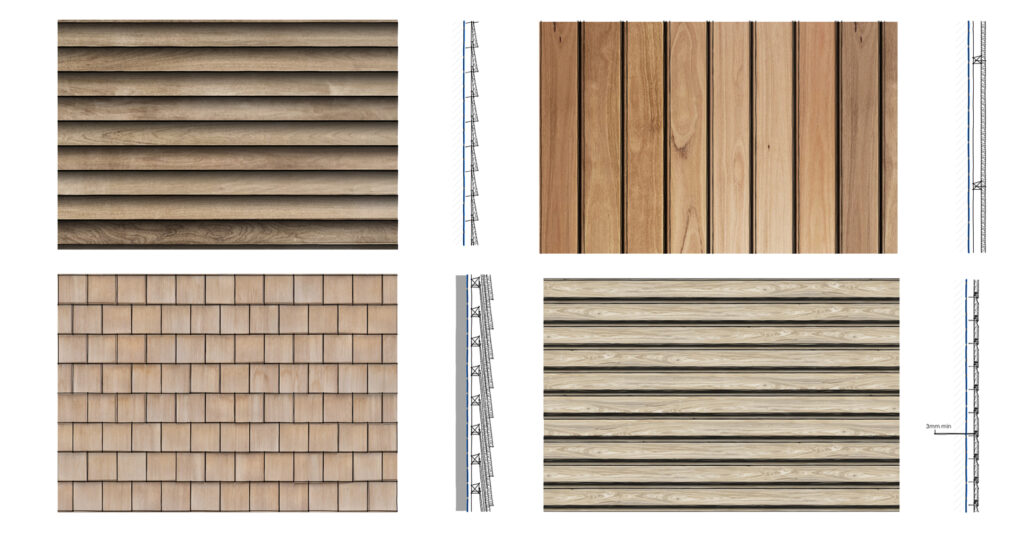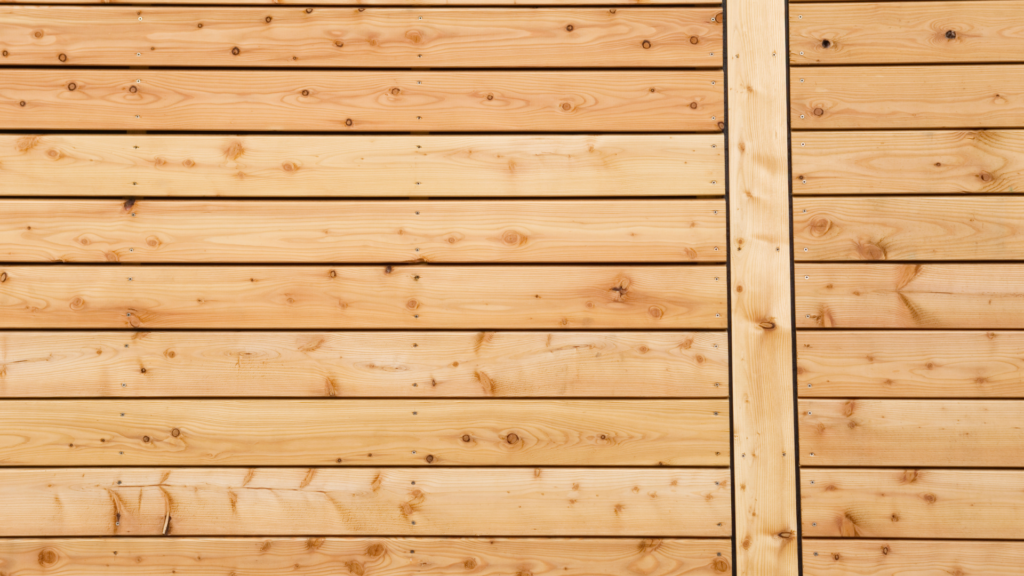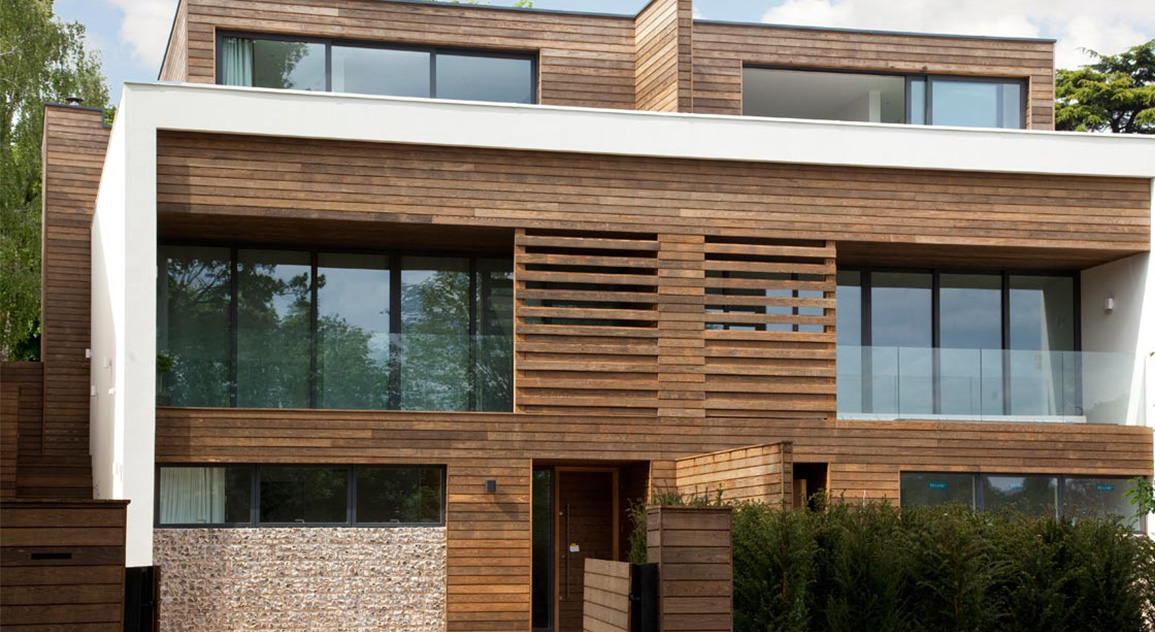Timber cladding, a timeless architectural choice, has garnered significant attention in recent years due to its numerous benefits. From enhancing the aesthetic appeal of a structure to improving its functionality and sustainability, timber cladding stands as a versatile solution for both residential and commercial properties. In this comprehensive guide, we delve into the advantages of timber cladding and why it continues to be a preferred option for architects, builders, and homeowners alike.
Table of Contents
- Durability and Longevity
- Aesthetic Versatility
- Environmental Sustainability
- Thermal Insulation and Energy Efficiency
- Structural Stability and Strength
- Low Maintenance Requirements
- Natural Insulation Properties
- Fire Resistance
- Types of Timber Cladding
- Frequently Asked Questions (FAQs) about Timber Cladding
- Is timber cladding suitable for all types of buildings?
- How does timber cladding contribute to environmental sustainability?
- What maintenance is required for timber cladding?
- Is timber cladding fire-resistant?
- Can timber cladding provide insulation against sound?
- What are the primary benefits of using timber cladding?
- How long does timber cladding typically last?
- Is timber cladding cost-effective compared to other materials?
- Can timber cladding be customized to suit specific design preferences?
- Is timber cladding suitable for DIY installation?
Durability and Longevity
One of the primary advantages of timber cladding is its exceptional durability and longevity. Timber, when properly treated and maintained, can withstand the test of time, outlasting many other building materials. With advancements in treatment technologies, timber cladding can now resist rot, decay, and insect infestation, ensuring a prolonged lifespan for the structure it adorns.
Aesthetic Versatility
Timber cladding offers unparalleled aesthetic versatility, allowing for a wide range of design possibilities. Whether aiming for a rustic, traditional look or a sleek, modern facade, timber cladding can effortlessly adapt to various architectural styles and preferences. The natural beauty and warmth of wood add character and charm to any building, creating visually stunning exteriors that stand out from the crowd.
Environmental Sustainability
In an era marked by increasing environmental awareness, timber cladding emerges as an eco-friendly choice for construction projects. Unlike synthetic materials, timber is renewable, biodegradable, and boasts a significantly lower carbon footprint. Additionally, timber cladding serves as a carbon sink, sequestering carbon dioxide from the atmosphere and contributing to the reduction of greenhouse gas emissions.
Thermal Insulation and Energy Efficiency
Timber cladding provides excellent thermal insulation, helping to regulate indoor temperatures and improve energy efficiency. By acting as a natural barrier against heat transfer, timber cladding reduces the need for excessive heating or cooling, thereby lowering energy consumption and utility costs. This thermal performance not only enhances comfort levels within the building but also aligns with sustainable building practices aimed at reducing environmental impact.
Structural Stability and Strength
Contrary to common misconceptions, timber cladding offers exceptional structural stability and strength. Engineered timber products, such as cross-laminated timber (CLT) and glued-laminated timber (glulam), boast impressive load-bearing capabilities, making them suitable for a wide range of construction applications. Timber cladding reinforces the structural integrity of buildings, providing reliable support while maintaining a lightweight and flexible framework.
Low Maintenance Requirements
Maintaining timber cladding is relatively straightforward compared to alternative materials. Routine inspections and occasional cleaning are usually sufficient to preserve the appearance and performance of timber cladding over time. With proper care and maintenance, timber cladding can retain its aesthetic appeal and functional properties for decades, making it a cost-effective and low-maintenance choice for building exteriors.
Natural Insulation Properties
In addition to thermal insulation, timber cladding offers natural acoustic insulation properties, reducing sound transmission and enhancing acoustic comfort within buildings. This is particularly advantageous in urban environments or areas with high noise pollution, where timber cladding can help create quieter and more peaceful living or working spaces.
Fire Resistance
Modern timber cladding products are engineered to meet stringent fire safety standards, offering enhanced fire resistance compared to traditional timber materials. Through the use of fire-retardant treatments and design considerations, timber cladding can provide valuable protection against fire hazards, ensuring the safety and well-being of occupants.
Types of Timber Cladding
Timber cladding offers a wide range of options to suit different design preferences, architectural styles, and project requirements. Here are some common types of timber cladding:

1. Horizontal Cladding:
Horizontal timber cladding, also known as lap siding or weatherboarding, is a popular choice for both traditional and contemporary buildings. Boards are installed horizontally, overlapping each other to create a protective barrier against the elements.
2. Vertical Cladding:
Vertical timber cladding provides a unique aesthetic appeal and can visually elongate the height of a building. This style is often used to create a sense of rhythm or verticality in architectural design.
3. Shiplap Cladding:
Shiplap cladding features overlapping boards with a slight groove or rebate along the edges, creating a tight seal that helps to shed water and prevent moisture infiltration. This type of cladding is commonly used for exterior walls and facades.
4. Tongue and Groove Cladding:
Tongue and groove cladding consists of interlocking boards with a protruding tongue on one edge and a corresponding groove on the other. This design creates a seamless and visually appealing finish while providing additional weather resistance.
5. Board-on-Board Cladding:
Board-on-board cladding involves overlapping boards with alternating layers, creating a textured and dynamic facade. This style offers both visual interest and enhanced protection against the elements.
6. Cedar Cladding:
Cedar is a popular choice for timber cladding due to its natural durability, insect-resistant properties, and distinctive grain patterns. Cedar cladding can be left untreated for a weathered, rustic appearance or finished with stains and sealants for added protection and color variation.
7. Oak Cladding:
Oak cladding exudes elegance and sophistication, with its rich color tones and prominent grain patterns. While oak is known for its strength and durability, it may require additional maintenance to prevent weathering and discoloration over time.
8. Thermally Modified Timber (TMT) Cladding:
Thermally modified timber undergoes a heat treatment process that enhances its stability, durability, and resistance to decay and insects. TMT cladding offers excellent dimensional stability and can be finished with various coatings to achieve the desired aesthetics.
9. Accoya Cladding:
Accoya timber is a high-performance, sustainable material that undergoes acetylation to improve its durability, stability, and longevity. Accoya cladding is highly resistant to rot, decay, and insect damage, making it suitable for demanding exterior applications.
10. Reclaimed Timber Cladding:
Reclaimed timber cladding utilizes salvaged wood from old buildings, barns, or other structures, adding character and history to new construction projects. Reclaimed timber offers a unique patina and weathered appearance, making each piece one-of-a-kind.

Frequently Asked Questions (FAQs) about Timber Cladding
Is timber cladding suitable for all types of buildings?
Timber cladding is highly versatile and can be used in various architectural styles and building types, including residential, commercial, and industrial structures.
How does timber cladding contribute to environmental sustainability?
Timber cladding is considered environmentally sustainable because wood is a renewable resource that can be responsibly harvested. Additionally, timber cladding acts as a carbon sink, helping to mitigate climate change by sequestering carbon dioxide from the atmosphere.
What maintenance is required for timber cladding?
Timber cladding typically requires minimal maintenance, including regular inspections for signs of damage and occasional cleaning to remove dirt and debris. Depending on the type of timber and finish, reapplication of protective coatings may be necessary every few years to maintain its appearance and performance.
Is timber cladding fire-resistant?
Modern timber cladding products are engineered to meet strict fire safety standards, with many options available that offer enhanced fire resistance through the use of fire-retardant treatments and design considerations.
Can timber cladding provide insulation against sound?
Yes, timber cladding offers natural acoustic insulation properties, reducing sound transmission and enhancing acoustic comfort within buildings. This can be particularly beneficial in urban environments or areas with high noise pollution.
What are the primary benefits of using timber cladding?
The primary benefits of timber cladding include durability, aesthetic versatility, environmental sustainability, thermal insulation, structural stability, low maintenance requirements, natural insulation properties, and enhanced fire resistance.
How long does timber cladding typically last?
With proper treatment and maintenance, timber cladding can last for several decades or even longer, making it a durable and long-lasting choice for building exteriors.
Is timber cladding cost-effective compared to other materials?
While the initial cost of timber cladding may vary depending on factors such as the type of timber and installation method, its long-term durability and low maintenance requirements often make it a cost-effective option over the lifespan of the building.
Can timber cladding be customized to suit specific design preferences?
Yes, timber cladding offers extensive design flexibility, allowing for customization to meet specific aesthetic preferences and architectural requirements. From traditional to modern styles, timber cladding can be tailored to achieve the desired look and feel for a building’s exterior.
Is timber cladding suitable for DIY installation?
While timber cladding can be installed by experienced DIY enthusiasts, it is recommended to consult with professionals for larger or more complex projects to ensure proper installation and adherence to building codes and regulations.


